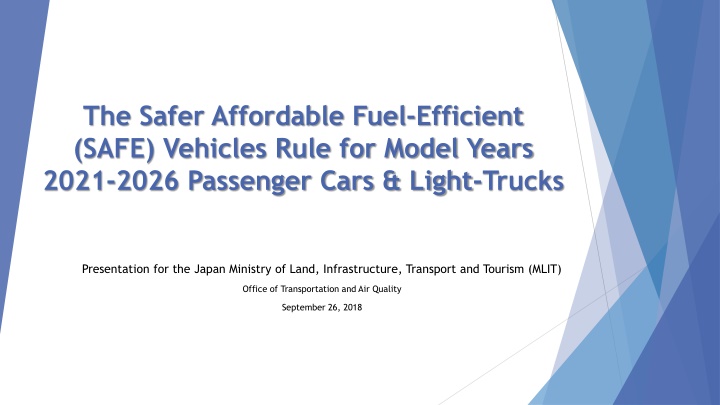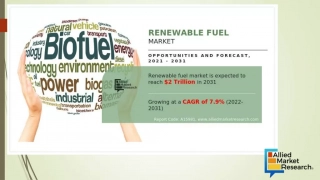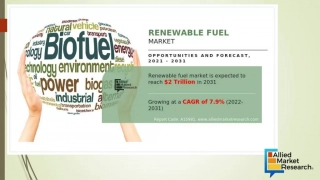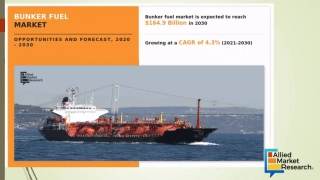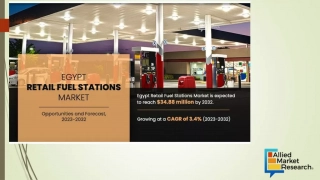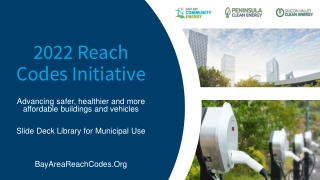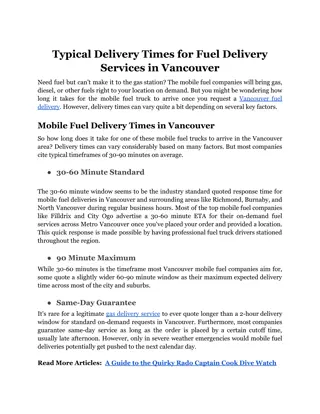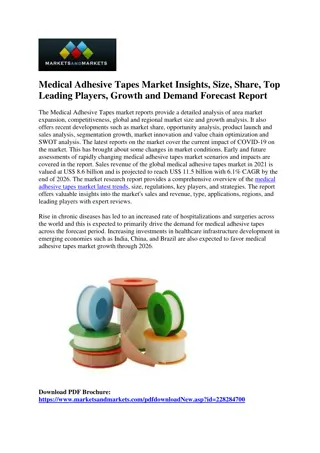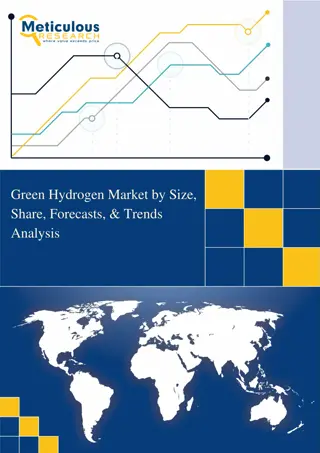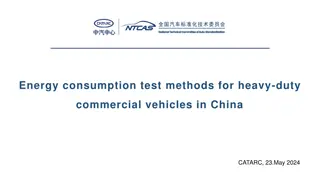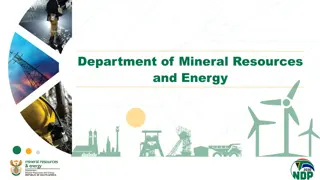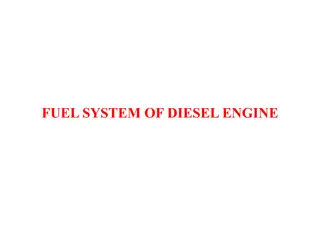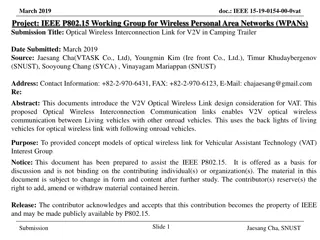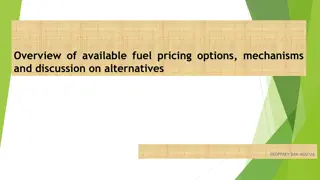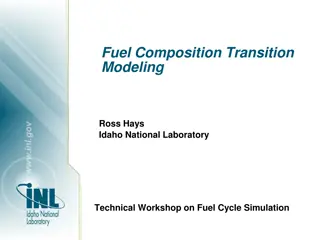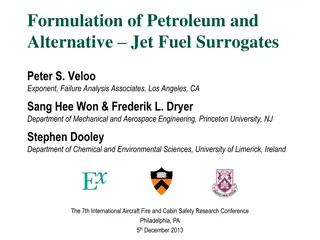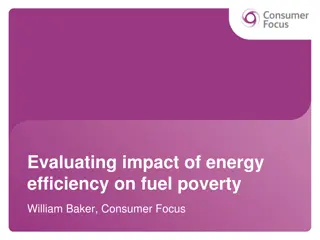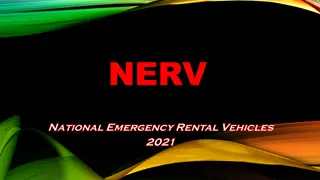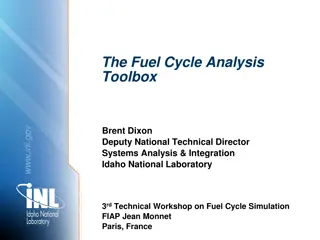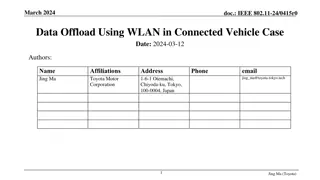The Safer Affordable Fuel-Efficient Vehicles Rule for Model Years 2021-2026
This presentation discusses the SAFE Vehicles Rule for passenger cars and light trucks, including background information, CO2 emission rates, vehicle size standards, and the Midterm Evaluation process. It provides insights into EPA's proposal and the public hearing process. The content emphasizes the importance of fuel efficiency and greenhouse gas standards in the automotive industry.
Download Presentation

Please find below an Image/Link to download the presentation.
The content on the website is provided AS IS for your information and personal use only. It may not be sold, licensed, or shared on other websites without obtaining consent from the author.If you encounter any issues during the download, it is possible that the publisher has removed the file from their server.
You are allowed to download the files provided on this website for personal or commercial use, subject to the condition that they are used lawfully. All files are the property of their respective owners.
The content on the website is provided AS IS for your information and personal use only. It may not be sold, licensed, or shared on other websites without obtaining consent from the author.
E N D
Presentation Transcript
The Safer Affordable Fuel-Efficient (SAFE) Vehicles Rule for Model Years 2021-2026 Passenger Cars & Light-Trucks Presentation for the Japan Ministry of Land, Infrastructure, Transport and Tourism (MLIT) Office of Transportation and Air Quality September 26, 2018
Outline Background Light-duty vehicle greenhouse gas (GHG) standards currently in place Midterm Evaluation process leading to SAFE NPRM Highlights of EPA s proposal Public hearings and comment period Questions/Discussion 2
Light-duty Vehicle CO2 Emission Rates 30 800 Adjusted Fuel Economy (MPG) Adjusted CO2(grams/mile) 700 25 Car Vehicle CO2 Standards began 600 Both 20 Truck 500 Both Truck EPA s current CO2 standards would require year-over-year improvements through 2025 15 400 Car 300 10 1975 1980 1985 1990 1995 2000 2005 2010 2015 2020 1975 1980 1985 1990 1995 2000 2005 2010 2015 2020 Model Year Model Year 3 Light-Duty Automotive Technology, Carbon Dioxide Emissions, and Fuel Economy Trends Report (EPA-420-S-18-001, January 2018) Adjusted CO2and fuel economy values reflect real world performance and are not comparable to automaker standards compliance levels. Adjusted CO2values are, on average, about 25% higher than the unadjusted, laboratory CO2values that form the starting point for GHG standards compliance, and adjusted fuel economy values are about 20% lower, on average, than unadjusted fuel economy values that form the starting point for CAFE standards compliance.
Standards based on Vehicle Size (Footprint) CO2 Footprint Target Curves for Trucks (Separate footprint curve for Cars) Chevy Silverado Ford F-150 Toyota Sienna As sales shift from cars to SUVs/trucks, an OEM s standard becomes less stringent Mazda CX-5 Buick Encore 2025 Projection: ~50 mpg compliance = ~36 mpg real-world 4
Midterm Evaluation Process In the 2012 rule finalizing standards for the model year (MY) 2017-2025 standards, EPA committed to conduct a Midterm Evaluation to determine whether the standards for MY 2022-2025 remained appropriate January 2017: Former EPA Administrator McCarthy made a determination that the 2022-2025 standards remained appropriate Following public comment on a July 2016 Draft Technical Assessment Report issued by EPA/NHTSA/California Air Resources Board and a November 2016 EPA Proposed Determination. March 2017: EPA announced the Agency would reconsider the Final Determination August-September 2017: EPA held a public comment period/hearing to gather updated data and information to inform the Reconsideration April 2018: Former EPA Administrator Pruitt determined that the MY2022-2025 standards are not appropriate, and announced that EPA and NHTSA would work in partnership to initiate a notice and comment rulemaking to set appropriate standards 5
Highlights of Light-duty Vehicle GHG/CAFE SAFE Proposal EPA and NHTSA jointly released the Safer Affordable Fuel-Efficient (SAFE) proposal on August 2, 2018. Published in the Federal Register on August 24, 2018 The proposed alternative would reduce the stringency of the CO2 vehicle standards for MY2021-2026 to the level of the MY2020 standards. Beginning in MY 2021, EPA proposes to eliminate the option for manufacturers to apply credits for air conditioning refrigerant leakage toward tailpipe CO2 compliance. Similarly, EPA proposes to eliminate manufacturers flexibility options to either use CO2- equivalent credits to meet methane and nitrous oxide emissions standards, or to fold in methane and nitrous oxide emissions (on a CO2-equivalent basis) into their CO2 fleet average The agencies are taking comment on a wide range of alternative stringencies (next slide) EPA is also proposing to withdraw the Clean Air Act waiver for California s GHG and zero emissions vehicle (ZEV) program, which was approved in January 2013, for MY2021-2025 vehicles. 6
Regulatory Alternatives for Public Comment Existing EPA CO2 standards average ~4.7%/year stringency increase from MY2020-2025 7
Major Projected Impacts of SAFE Proposal for GHG Program Projected Impact Reduction in Vehicle Cost (MY2029) $2,300/vehicle Increase in Fuel Costs (MY2029, 3%DR) $1,850/vehicle MY Lifetimes through MY2029 Reduction in Crash Fatalities (lifetime of MY2029) Total Costs -$830 billion 1,000 Total Benefits -$540 billion Increased Vehicle Sales (MY2029) 170,000 Net Benefits $290 billion Reduction in Regulatory Costs (MY2029) $50 billion Reduction in Automotive Employment (MY2029) 64,000 Increase in US petroleum consumption (CY2029) 1/2 million bpd Increase in CO2 emissions (CY2029) 83 MMT 8
Light-duty Vehicle GHG Emission Inventories Annual U.S. Light-Duty Vehicle GHG Emissions (MMT CO2) 1,500 National LD Vehicle GHG Emissions (MMT CO2) Cumulative CO2 increase of 3.8 billion tons through 2050 1,000 2020 2025 2030 2035 2040 2045 2050 Calendar Year SAFE Proposal Existing EPA Standards 9
Request for Comment on Enhanced Flexibilities Alternative EPA is seeking comment on a variety of enhanced flexibilities to broaden the pathways available to manufacturers in meeting a given level of stringency of the standards Advanced technology incentives Hybrid incentives Off-cycle emissions credits Connected/autonomous vehicle incentives Emission credit life extension Natural gas vehicle incentives High octane gasoline fuel blends 10
Enhanced Flexibility Scenarios Illustrated in NPRM Effect of Different Example Flexibilities in Reducing Program Stringency Compared to the Current EPA Standards (which average 4.7% per year stringency increase from MY2020-2025) Average Year-over-Year Reduction in CO2 for MYs 2020-2025 Example Enhanced Flexibility Scenarios 4.7% per year No Action Alternative (the existing EPA standards) Example Enhanced Flexibility A: EPA extends the 0 g/mi factor and a multiplier of 2x for BEVs, and BEV sales achieve a level of 3% of new vehicle sales. 4.0% per year Example Enhanced Flexibility B: EPA extends the 0 g/mi factor and a multiplier of 4.5x for BEVs, and BEV sales achieve a level of 3% of new vehicle sales. 2.8% per year Example Enhanced Flexibility C: EPA extends the 0 g/mi factor and a multiplier of 4.5x for BEVs, and BEV sales achieve a level of 6% of new vehicle sales, mild hybrid light-trucks receive a 10g/mi credit and achieve 20% new sales, strong hybrid light-trucks receive a 20g/mi credit and achieve a 10% new sales level. 0.8% per year 0 % per year Alternative 1 (EPA proposal) 11
Public hearings and comment period EPA and NHTSA held 3 public hearings September 24: Fresno, CA September 25: Dearborn, MI September 26: Pittsburgh, PA The public comment period has been extended by 3 days, and closes on October 26, 2018 EPA looks forward to assessing the public comments 12
For more information on the SAFE proposal: https://www.epa.gov/regulations-emissions-vehicles-and-engines/safer- affordable-fuel-efficient-safe-vehicles-proposed Questions? 13
